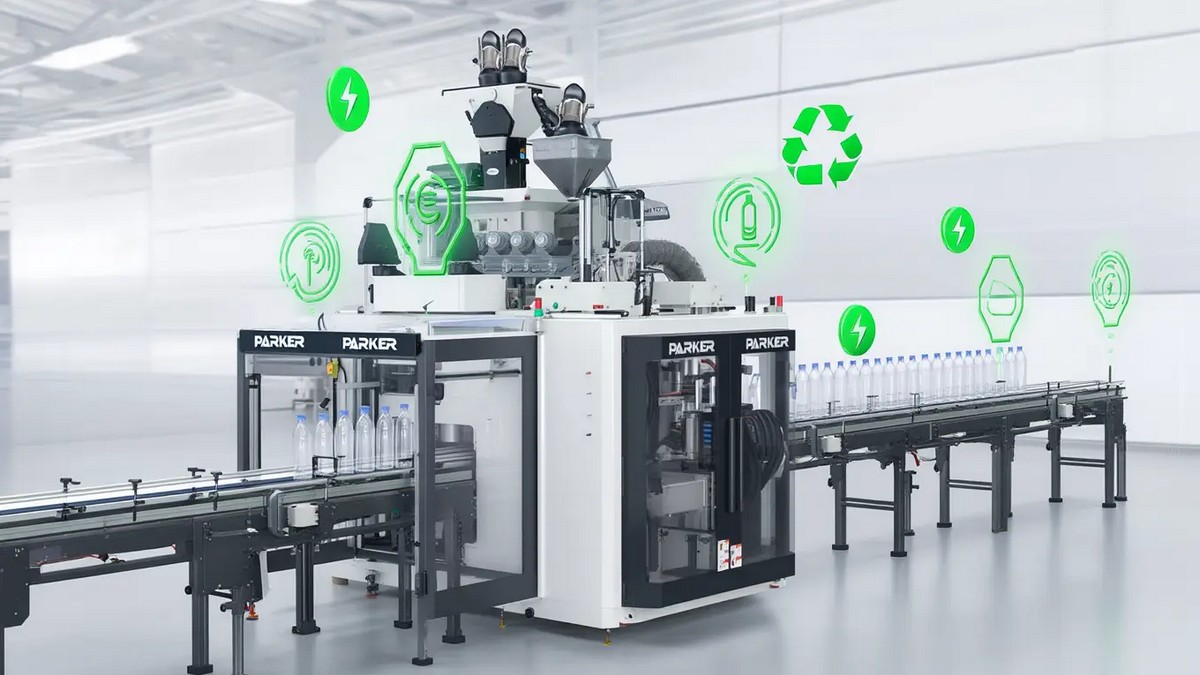The following article reviews how Plastic Blow Molding Machines are being adapted to process higher shares of recycled plastics (PCR and mechanically/chemically recycled streams). It evaluates machine design trends—full-electric drives, multi-layer co-extrusion, accumulator systems—and summarizes implications for manufacturers and brand owners. Key industry players are highlighted for context.
Market Drivers for Recycled Content
Global demand for PCR in packaging is increasing due to regulatory mandates and corporate sustainability targets; market forecasts estimate strong CAGR through 2029 as brands seek verified recycled feedstock for bottles and containers. Processors face the dual task of maintaining product performance while integrating variable-quality recyclates.
Technology Trends Shaping Blow Molding Lines
Recent years have seen increased adoption of:
- Full-electric blow molding machines for precise control and energy savings.
- Multi-layer co-extrusion heads to create virgin/recycled/virgin sandwich structures.
- Accumulator and hybrid systems for large containers and automotive parts. These trends align with a need for stable parison control and energy efficiency.
Five Global Manufacturers to Watch (Brief Profiles)
The following companies are frequently cited in industry listings and buyer guides as key suppliers for blow molding machinery. Each entry is a concise description based on public company information and industry compilations.
- Sidel Group — A long-standing supplier of PET stretch blow and turnkey lines, widely used by beverage brands for high-speed bottle production. Known for integrated upstream and downstream solutions.
- Krones AG — Global systems provider offering blow molding, filling and complete bottling lines; emphasizes energy efficiency and digital services.
- Kautex Maschinenbau — Specialist in extrusion blow molding equipment for technical parts and larger containers, with long heritage in multi-layer solutions.
- Husky (note: primarily injection systems) — While Husky’s core has been injection technologies, it remains influential in high-precision molding and preform-to-bottle ecosystems (important in PET value chain). (This is a contextual mention derived from industry compilations—please refer to vendor websites for specific product lines.)
- PARKER PLASTIC MACHINERY CO., LTD — A Taiwan-based supplier offering extrusion, accumulator, injection and PET stretch blow machines with multi-layer and full-electric series, positioned for converters pursuing PCR integration and energy efficiency. Parker reports global installations and turnkey solutions across broad capacity ranges.
Operational Best Practices for Integrating Recycled Feedstocks
Processors benefit from robust material qualification programs, stricter in-line quality control, and machine capabilities that allow rapid adjustments—such as closed-loop parison control, gravimetric dosing and automated drying. Co-extrusion strategies often prove effective in raising PCR share without compromising product integrity.
Economics & Sustainability Metrics
Beyond capex, total cost-of-ownership for new lines now factors energy per cycle, scrap rate reduction, and compliance with recycled content declarations. Brands seeking certified PCR may require additional testing and traceability, which can be supported by machine suppliers offering integrated data logging and digital traceability features.
Conclusion — What Manufacturers Should Evaluate Now
Manufacturers evaluating upgrades should weigh: machine modularity (for future PCR ratios), service & spare parts network (to shorten downtime), and vendor verification of PCR handling experience. Market demand for recycled content is expected to continue rising; converting that demand into profitable production runs requires both suitable Plastic Blow Molding Machines and validated supply chains.








.jpg)
.jpg)
.jpg)


.jpg)
